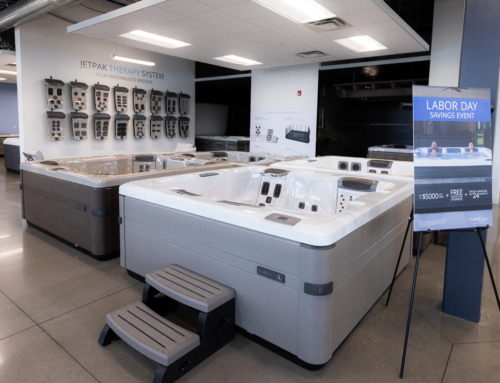You’ve heard all the statistics about new businesses before–and yes, there’s truth in them. Reality dictates that nearly 50% of startups, including spa retailers, fail within the first few years. While some of these cases are the result of unfortunate circumstances, others can be avoided.
Mistakes can and will be made running your spa business; however, it’s what you do to minimize and learn from errors that matters most. When you boil it down, it’s the lack of a plan that causes most new businesses to fail.
Have a Plan
Building your business model is the single most important step in running your new business, and it should also be the first one. Danielle Lavallee Wasson of MyRetailCoach.com explains, “All business managers make bad decisions at one point or another. These can be minimized if there is a strong plan in place that is supported by a clearly defined mission and values.” This is the plan from which you will base all your leadership decisions, from branding to sales strategy.
If you can't envision your plan, how can you expect others to understand and accept what you have to offer?
With a clear, informed business plan, you can make smarter decisions and increase your leadership capacity. More importantly, your employees and colleagues can help you work toward these goals and uphold your values. Because when “employees don’t have clear goals, don’t understand the mission and values of the business,” Wasson explains, “[they can] truly hinder performance.”
As the leader of your spa business, it’s your job to communicate your vision to both employees and customers. Without a plan, you’re likely to repeat the same mistakes until your business shutters prematurely. In other words, if you cannot envision your plan, how can you expect others to understand and accept what you have to offer?
Emphasize Value Propositions
Many businesses fail when they don’t have anything unique to offer among their competitors or don’t know how to communicate it. You may have financial goals in place, but they are difficult to meet when you cannot convince customers to buy from your showroom. When it comes to establishing how you do business, communicating your value propositions is essential. Before you open up shop, ask yourself the following questions:
-
Who are you and what do you have to offer your customers?
All successful businesses have one trait in common: they all offer something that makes them unique. Whether it’s lower prices, better values, specialized product selection, customer service benefits, or something else, you do business differently than your competitors. To avoid fading into commercial obscurity, you need to identify this quality in your business model.
-
Are your goals and efforts clear?
Perhaps in your mind, your value props are as clear as day. However, if you fail to communicate your ideals in a clear, concise manner, they may be lost on others. If you find yourself rambling when describing what sets you apart, then it’s unlikely your customers are going to grasp it. Focus on making your mission concise and to the point.
-
Is your message engaging and compelling?
Finally, in order to convince customers to shop in your spa dealership, you need an attention-grabbing message. Your message needs to lure people to your showroom and prove its worth. In other words, does your message achieve its mission? And what’s the best way to test the effectiveness of your message? Take a look at your sales numbers.
Take the Reins
Refined goals and business values are all well and good, but it also takes effective leadership to put them into practice. In fact, many business models are perfectly suited to succeed, but hindered by poor decision making and miscommunication. Lavallee Wasson has observed that there “are many dealers who fail at one or more of the following: to clarify their mission, to set goals, to make realistic plans and, even if they do all of the above, to execute.”
The best way to test your vision and value propositions is to listen to what others think of them.
To become a better communicator, you must first enter a dialogue–both with your employees and your customers. There’s an emphasis on dialogue here. Communication and leadership is a two-way street: you must also learn from the other person. Take suggestions and address concerns. The best way to test your vision and value propositions is to listen to what others think of them.
As a business leader, putting your plan into action is your most important role. If you cannot convey your vision to your employees or fail to see the big picture, the harder it is to execute. With every decision you make, you need to consider your overall mission and ask yourself, “Does this make sense?” You’ll discover that adhering to your core mission will reduce the chaos in the decision-making process, providing order and direction in your choices.
Keep an Eye on the Numbers
Even with strong leadership qualities and a plan, without cold, hard numbers informing your decisions, your business can still fail. “Another huge [reason for failure] is a lack of accountability and measuring–keeping a close eye on key financial indicators and indicators of performance of staff as well if critical,” Wasson explains.
“Lack of accountability leads to less and less profitable work being done.” In other words, the more time you spend guessing and leading with your “gut,” the less effectively you spend your time, which can quickly add up to less profitability.
If management uses key financial ratios and performance indicators such as closing ratios, profits per square footage, gross profit margins, etc., they can make much better decisions.
Though you may have an accountant who handles the nitty-gritty, you should still check your numbers regularly. Analyze margins revenue streams, ratios and all your key financial barometers at least once a week–if not daily. With a strong financial understanding of your business, you can make the right decisions that keep your sales on track.
Execute Efficiently
In philosophy, knowledge is power; in business, knowledge is success. The more you can make of what you know, the better off your business is. Effective leaders use KPIs in every decision they make. The better you know the numbers, the more efficiently you can lead. Instead of forcing your KPIs to fit your business model, learn how to adjust your plan to the cold, hard numbers.
Wasson reiterates, “If management uses key financial ratios and performance indicators such as closing ratios, profits per square footage, gross profit margins, etc., they can make much better decisions–decisions based on facts and figures instead of feelings.” No aspect of your business should be unintentional. Each factor plays a role in your decision-making.
When starting a new spa business, failure does not have to be an option. Though the odds are stacked against most entrepreneurs, strong vision and a clear plan of how to execute it, you can succeed in spa retail.









Leave A Comment